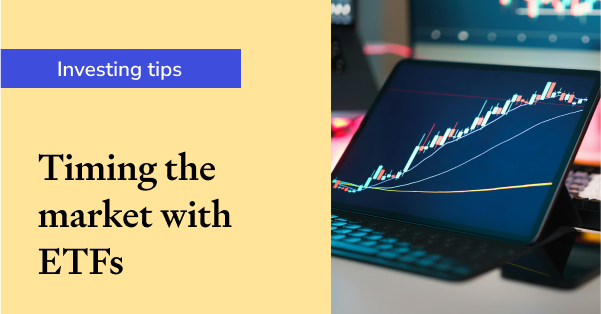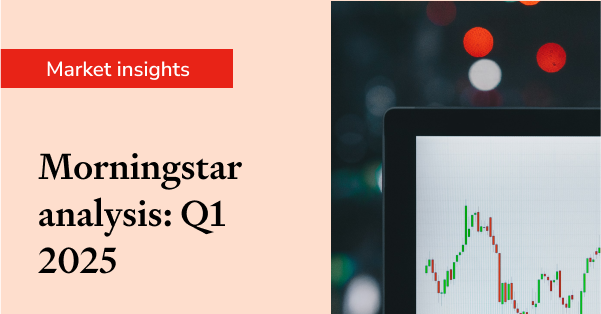8 ways to use Sharesight's custom groups feature
Custom groups are one of Sharesight’s most useful features, but many Sharesight users are either unaware of them, or they use them minimally (such as grouping holdings by industries). Used effectively, however, custom groups can actually help you make better investment decisions. In this blog, I’ll explain what custom groups are, and some of the lesser-known custom grouping strategies that can help you get deeper portfolio performance insights and make more informed investing decisions.

What are custom groups?
Sharesight’s custom groups feature allows you to group your investments into subgroups or categories. While the benefits of grouping depend on why and how you group your investments, one clear advantage is that it’s an easy way to reduce mental load. Instead of grouping investments in your head, you outsource this task to Sharesight, which reduces cognitive strain and frees up your mental resources to do more important analysis.
With that being said, here are 8 ways you can group your holdings:
Asset class
If you use diversification strategies like the traditional 60/40 portfolio, the all-weather portfolio (Ray Dalio), the Future Fund model or a global multi-asset strategy, grouping your holdings by asset class — such as domestic and international equities, crypto, fixed income, property and cash — is a simple way to track your allocation and manage risk. You can see how much you hold in each category by running the diversity report sorted by custom groups, and use this information to rebalance your portfolio as needed.
The level of detail in your groupings is entirely up to you. For example, a 60/40 portfolio only needs two categories: stocks and bonds. But you can also break it down further: stocks into domestic and international, bonds into government and corporate, and so on.
Time horizons
I haven’t seen many people group their investments by time horizon, but it could be a powerful way to avoid thesis drift. You might buy shares for a range of reasons — some opportunistic, like price discrepancies or corporate actions, and others with a mid- to long-term view. Categorising them by intent can help with buy/sell decisions and reduce the risk of letting market prices sway your judgment — for example, holding short-term trades too long, or selling strong long-term holdings too soon.
I made this mistake myself. I once bought a stock for opportunistic reasons (low P/E ratio and solid revenue growth) but it wasn’t a good long-term investment (it was a commoditised business with poor ROE). As the share price rose, I held on, influenced by momentum rather than the original thesis. I should have sold at fair value. That ended up being a costly mistake.
Thematic
Grouping your investments by theme can be especially useful if you’re focused on megatrends and long-term growth opportunities. Thematic investments like AI, lithium, cybersecurity and clean energy gained popularity during and after COVID-19 as ETFs made them easier to access. If you hold multiple ETFs within the same theme, grouping them makes it easier to track how each theme contributes to your overall performance. You can monitor this with the contribution analysis report, assess risk correlations with the drawdown risk report, and identify any overconcentration using the exposure report.
Market capitalisation
For investors with concentrated risk exposure, grouping holdings by market capitalisation — such as large-cap, mid-cap, small-cap, and micro-cap — creates a structured framework to balance risk and return potential. Mega-cap and large-cap stocks typically offer stability and lower volatility, while small-cap and micro-cap stocks generally present higher growth potential alongside greater risk. Tools like RoMaD (Return Over Maximum Drawdown), used in our drawdown risk report, can help quantify and compare the risk-reward profile of each market cap tier, allowing you to make more informed portfolio decisions.
Factors
Grouping investments by factors — such as growth, value, dividend, or momentum — helps refine your strategy and limit thesis drift. Each category comes with its own expectations: growth stocks tend to carry higher volatility, value stocks often demand longer time horizons, and momentum trades typically perform best over shorter cycles. Understanding these nuances in times of market stress can help you steer clear of reactive decisions, such as offloading a long-term value play during a dip or holding onto a fading momentum trade for too long.
Income
If you're a dividend investor, you might diversify income streams across REITs, fixed income (like government or corporate bonds), and high-yield stocks. Grouping these holdings gives you clearer insight into how each category contributes to your portfolio in terms of cash flow timing, diversification, inflation hedging and reinvestment potential. This structured approach helps keep your passive income stable and resilient amid changing market conditions.
Financial goals
Grouping investments by financial goals such as retirement, education, or a home deposit, helps align your portfolio with real-life milestones. Matching assets to timelines (for example, stocks for long-term growth and cash for short-term needs) makes it easier to track progress and adjust your strategy if returns fall short. It keeps your investments purposeful and reduces the risk of emotional decisions.
Valuation
Grouping investments by valuation metrics such as P/E ratio (price vs. earnings), ROE (profit efficiency), SMA200 (long-term trend), and RSI (overbought/oversold signals), makes it easier to spot opportunities and risks at a glance.
Make better investing decisions with Sharesight
Join thousands of investors using Sharesight to stay on top of their investments.
Sign up for a free Sharesight account to track your performance, manage your tax and uncover portfolio insights, all in one place.

FURTHER READING

You can time the market – and ETFs are the way to do it
Marcus Today founder and director Marcus Padley discusses timing the market, and how investors can do this using exchange-traded funds (ETFs).

Morningstar analyses Australian investors’ top trades: Q1 2025
Morningstar reviews the top 20 trades by Australian Sharesight users in Q1 2025, and reveals where their analysts see potential opportunities.

Sharesight product updates – April 2025
This month's focus was on improving cash account syncing, revamping the future income report and enabling Apple login functionality.